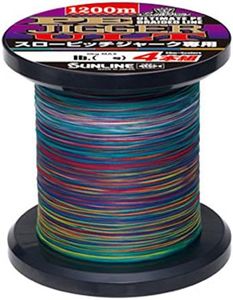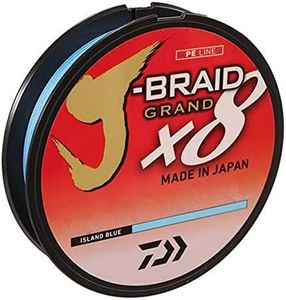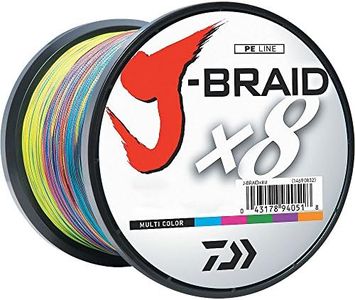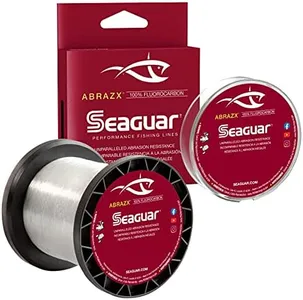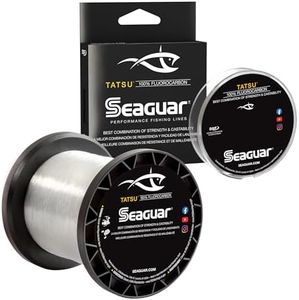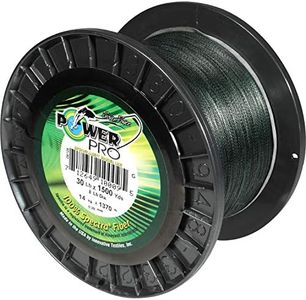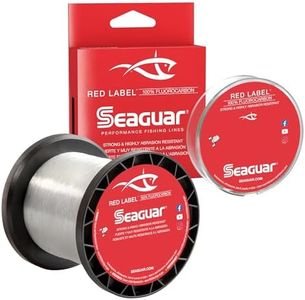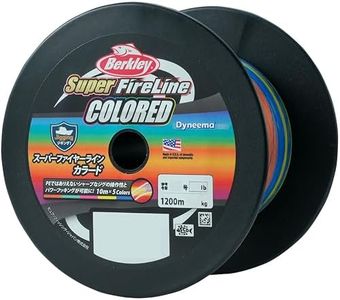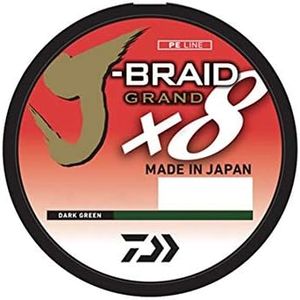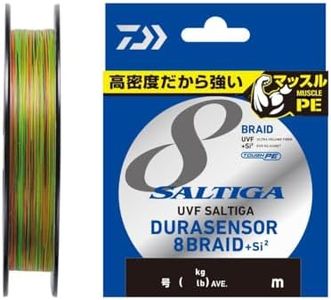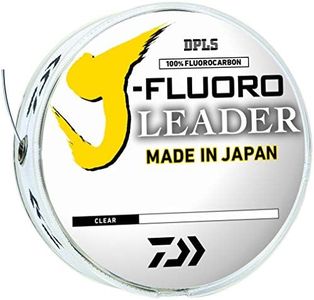We Use CookiesWe use cookies to enhance the security, performance,
functionality and for analytical and promotional activities. By continuing to browse this site you
are agreeing to our privacy policy
10 Best Fishing Line
From leading brands and best sellers available on the web.Buying Guide for the Best Fishing Line
Choosing the right fishing line is an important first step for a successful and enjoyable fishing experience. The type of line you select affects casting, how well you detect bites, and your overall ability to reel in fish. Because there are several types of fishing lines with different strengths and properties, it’s important to match the line to the type of fishing you plan to do, the fish species you’re after, and your personal fishing style.Line TypeFishing lines come in several types, with the main ones being monofilament, fluorocarbon, and braided. Monofilament is stretchy, easy to handle, and good for beginners, making it suited for general fishing. Fluorocarbon is almost invisible underwater and more resistant to abrasion, which is useful for clear water or fish that are easily spooked. Braided line is super strong and has little stretch, making it best for heavy cover or when you need to feel even the slightest bite. Think about where you’ll be fishing and what you find easier to handle. For casual fishing in lakes and ponds, monofilament is a safe start. For fishing in clear water or when targeting sharp-eyed fish, fluorocarbon works well. If you’ll be pulling fish from heavy vegetation or need something extremely strong, braided might be your pick.
Line Strength (Pound Test)Line strength, often called pound test, indicates how much weight the line can support before it breaks. Light lines (2-6 lb test) are great for small fish and make the fishing more sporting, while medium (8-12 lb test) offers more versatility for most freshwater fishing. Heavy lines (15 lb test and above) are used for larger fish or tough conditions, like saltwater or thick cover. Choose a strength that matches both the size of fish you expect and the type of water you’ll fish in. Lighter lines are better for finesse and get more bites, but heavier lines provide more security against breakage.
Line DiameterLine diameter refers to how thick the fishing line is. Thinner lines are less visible to fish and fit more on your reel, providing longer casting distance. However, they might be weaker than thicker lines of the same material. Thicker lines offer more strength but can be more visible and harder to cast far. If you’re targeting cautious fish in clear water, go for a thinner diameter. If you want something tough and don’t care much about visibility, a thicker line could be better.
StretchStretch is how much a line can elongate under tension. Monofilament lines stretch the most, which can help absorb sudden pulls and is forgiving for beginners. Braided lines stretch very little, allowing you to feel bites more easily and set the hook faster. Fluorocarbon falls somewhere in between. If you need sensitivity to detect soft bites or want to fish in deep water, low-stretch lines are ideal. If you prefer a bit of shock absorption, more stretch could work in your favor.
Abrasion ResistanceAbrasion resistance means how well the line holds up against rough surfaces like rocks or wood. Some lines are designed to handle scraping and rubbing, which is important if you’re fishing in areas with obstacles. If you fish in clear, open water this is less important, but if you target bass in weedy or rocky places, look for high abrasion resistance. This can save you from losing both fish and tackle.
VisibilityVisibility is how easily fish and people can see the line in water. Some lines are made nearly invisible for wary fish, while others have high-visibility colors for you to track above water. Choose invisible lines (clear or fluorocarbon) for clear water or shy fish, but bright lines if you want to keep track of where your line is, especially in murky water. Consider your needs—seeing your line helps monitor bites and avoids tangles, but too visible a line may scare off fish.
MemoryLine memory means the tendency of fishing line to form coils or shapes after being on a reel. High memory lines can tangle easily and may cause casting problems, while low memory lines lay straighter and are easier to manage. If you want fewer tangles and smoother casting, choose lines with low memory, especially if you don’t re-spool your reel often.

